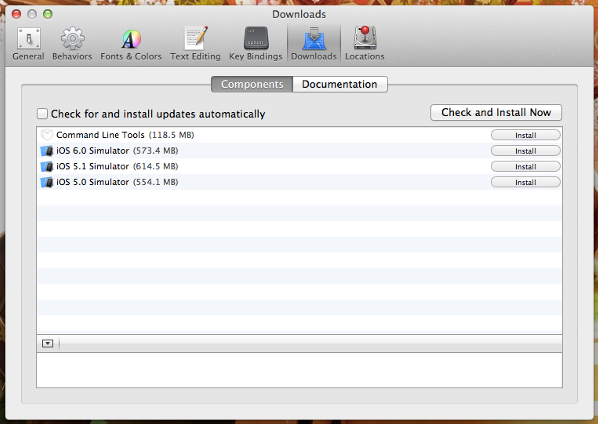Python virtualenv on Mac OS X
Installation (version 10.8):
1. Install XCode from apple store
2. Additionally install Xcode Command Line Tools (see screenshot)

3. Update ~/.bash_profile
export ARCHFLAGS="-arch x86_64" export PATH=/usr/local/share/python:/usr/local/bin:/usr/bin:/bin:/usr/sbin:/sbin test -f ~/.bashrc && source ~/.bashrc
4. Install homebrew (the missing package manager for OS X)
ruby -e "$(curl -fsSL https://raw.github.com/mxcl/homebrew/go)"
Homebrew is a package management system that simplifies software installation on the Mac OS X operating system. It is a free/open source software project with goal to simplify installation of other free/open source software.
Homebrew installs packages to his own directory and then symlinks their files into /usr/local.
Run to ensure that installation passed without errors:
brew doctor
5. Install latest python
brew install python --with-brewed-openssl brew install python3 --with-brewed-openssl
6. Update ~/.bashrc
# virtualenv should use distribute instead of legacy setuptools export VIRTUALENV_DISTRIBUTE=true # pip should only run if there is a virtualenv currently activated export PIP_REQUIRE_VIRTUALENV=true # cache pip-installed packages to avoid re-downloading export PIP_DOWNLOAD_CACHE=$HOME/.pip/cache
7. Install virtualenv and other packages You need
pip install virtualenv
Links:
- http://hackercodex.com/guide/mac-osx-mountain-lion-10.8-configuration/
- http://hackercodex.com/guide/python-virtualenv-on-mac-osx-mountain-lion-10.8/
- http://mxcl.github.io/homebrew/
- http://en.wikipedia.org/wiki/Homebrew_%28package_management_software%29
- https://github.com/mxcl/homebrew/wiki/Homebrew-and-Python
Licensed under CC BY-SA 3.0